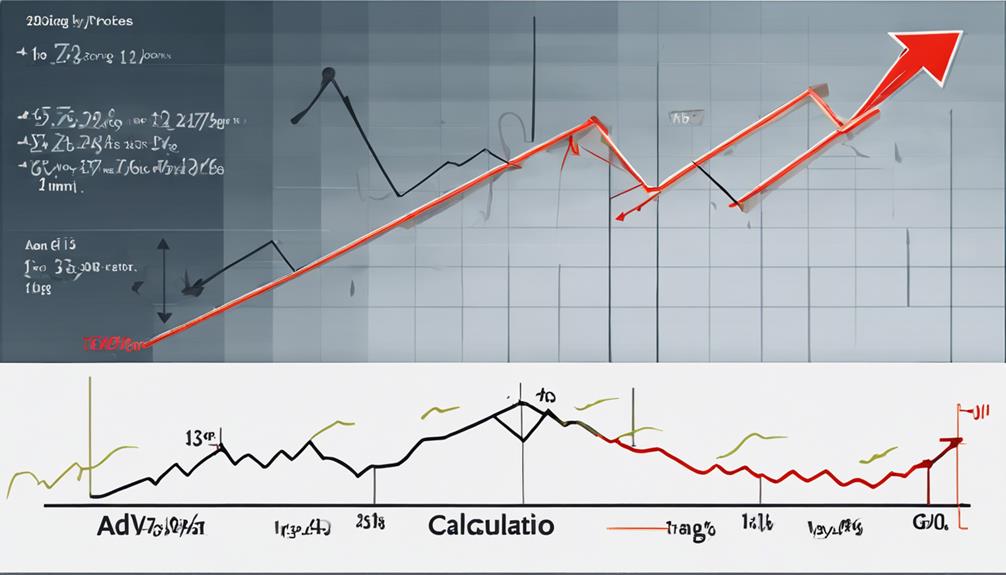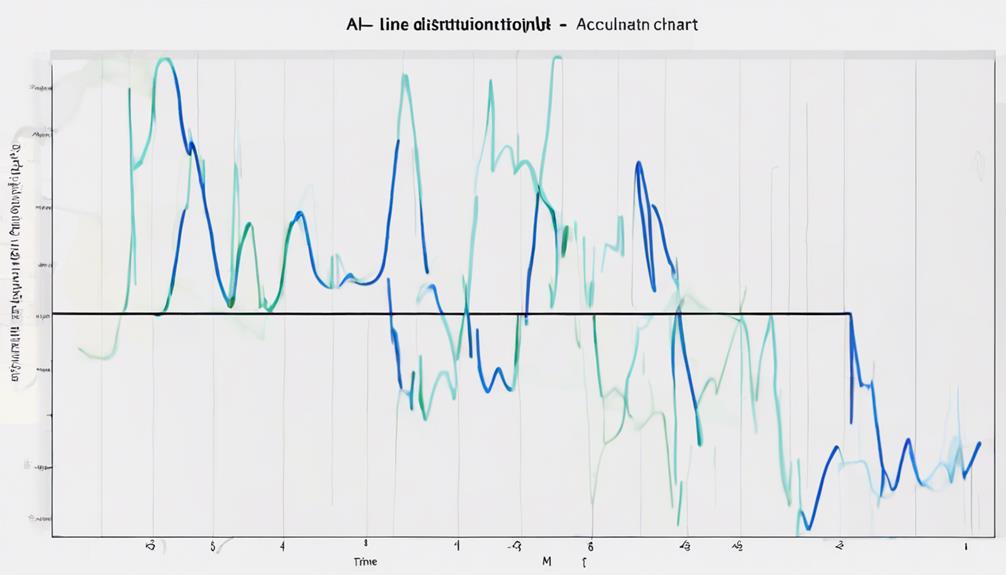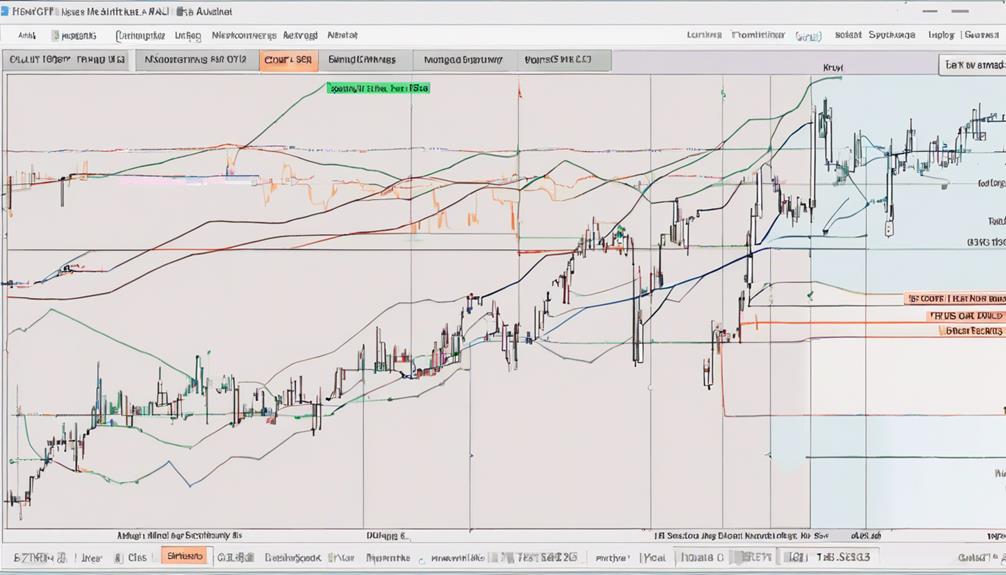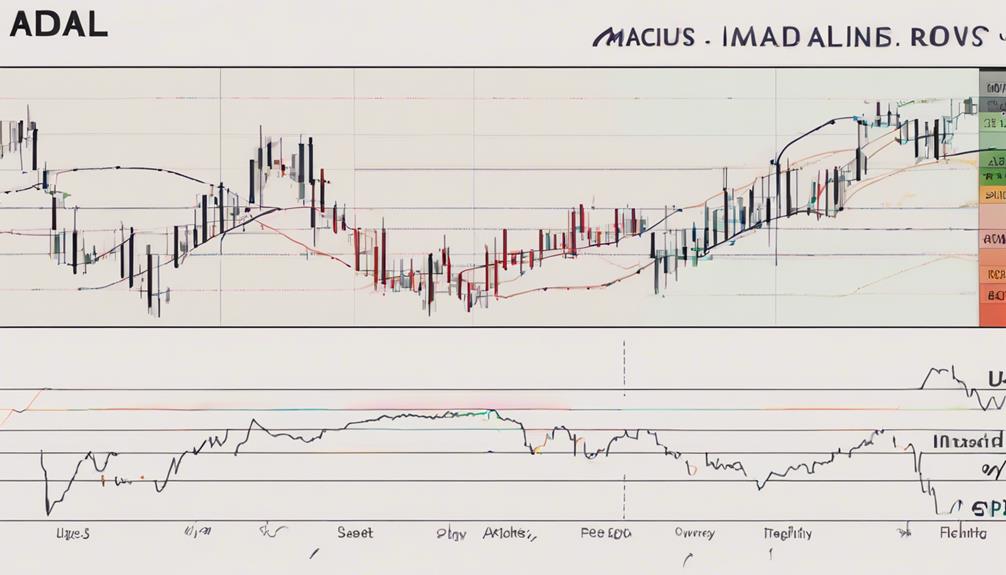Just as a compass guides a traveler through uncharted territory, the ADL Technical Indicator can serve as your navigational tool in the vast world of stock market analysis. Understanding how to interpret the fluctuations of the Advance-Decline Line can provide you with invaluable insights into market trends and potential trading opportunities.
By peeling back the layers of this indicator, you will uncover a treasure trove of information that could potentially enhance your trading strategies and decision-making process.
Explore the depths of the ADL with us to unlock its full potential and gain a competitive edge in the market.
Understanding the ADL Indicator
To grasp the significance of the ADL indicator, focus on its function as a market breadth measurement tool.
The ADL indicator calculates the daily difference between advancing and declining stocks in the market. It aids in understanding the level of stock participation in market movements and helps differentiate between movements influenced by a few large-cap stocks versus a broader market trend.
By tracking net advances and declines, the ADL provides valuable insights for trend analysis, assessing market direction, and forecasting stock market movements. Traders use this technical tool to confirm trends, predict reversals, and evaluate the overall health and breadth of market movements.
The ADL indicator is essential for assessing market breadth, gauging market risk, and comprehending stock participation levels in market trends.
Calculating the ADL Formula

Moving from understanding the significance of the ADL indicator to the practical application, the ADL formula is a crucial tool in calculating the Advance-Decline Line for market breadth analysis.
The ADL formula involves adding the net advances, which are determined by subtracting declining stocks from advancing stocks on a daily basis, to the previous ADL value. Mathematically, ADL = Net Advances + PADL, where PADL represents the previous ADL value.
This calculation method allows for a cumulative measure of market breadth changes over time. Daily updates of the ADL value are vital in reflecting the evolving trends in the market, providing insights into the market trends based on the volume of stocks moving higher or lower.
Interpreting ADL Line Charts

When analyzing ADL line charts, observe the movement to gauge market breadth and sentiment accurately. Traders look at the direction and slope of the ADL line to determine bullish or bearish sentiment in the market. A rising ADL line signifies positive market breadth and bullish sentiment, while a falling ADL line indicates negative market breadth and bearish sentiment among investors.
Advantages of Using ADL

Utilizing the ADL indicator in technical analysis provides traders with several key advantages in assessing market dynamics and potential reversals. Here are some benefits of using ADL:
- Early Warning Signals: ADL offers early signals for potential market reversals.
- Confirm Price Trends: It provides a straightforward way to confirm market trends and sentiment.
- Assess Market Strength: Helps in assessing market strength or weakness based on stock participation.
- Confirmation Tool: Can be used alongside price movements as a confirmation tool.
- Enhancing Trading Efficiency: Integrating ADL with other indicators enhances the efficiency of trading strategies.
Can the ADL Technical Indicator be Utilized by Beginner Traders?
The ADL in technical analysis, also known as the accumulation distribution line, can be a useful tool for beginner traders. This indicator helps to measure the flow of money into and out of a security, providing valuable insights into market sentiment and potential price movements. With a basic understanding, beginner traders can utilize the ADL to make informed trading decisions.
Is the ADL Indicator Suitable for Beginners in Trading?
For beginners in trading, stepbystep mastering ADL indicator can be a valuable tool. It measures market strength and can help identify potential trend reversals. By learning how to interpret and use this indicator, novice traders can gain valuable insights into market dynamics and make more informed trading decisions.
Comparing ADL With Other Indicators

Comparing ADL with other indicators offers traders valuable insights into market dynamics and trend confirmations. Pairing ADL with TRIN can provide a deeper understanding of market breadth and long-term trend implications.
Additionally, integrating ADL with popular indicators like MACD or RSI can enhance the efficiency of trading strategies by confirming signals. For a more comprehensive market view, analyzing ADL alongside the Chaikin Oscillator can be beneficial.
Furthermore, using ADL in conjunction with the Money Flow Index can help validate buying or selling pressure. Comparing ADL with the Price Volume Trend Index aids in confirming market trends and potential reversals, providing traders with a more robust framework for decision-making.
Frequently Asked Questions
What Is the Technical Indicator Adl?
The ADL, or Advance-Decline Line, tracks daily stock movements, showing the difference between advancing and declining stocks. It's a vital tool for gauging market breadth, distinguishing between index movements and broader market trends, helping you understand market risk.
Which Technical Indicator Is the Most Accurate?
In trading, the most accurate technical indicator varies based on market conditions and strategy. Backtesting and comparing signals can help determine accuracy. Combining indicators enhances accuracy and reduces false signals. Consider RSI, MACD, and Bollinger Bands for accuracy.
What Are the Top 5 Technical Analysis Indicators?
When considering the top 5 technical analysis indicators, keep in mind MACD, RSI, Bollinger Bands, Fibonacci Retracement, and Stochastic Oscillator. They offer insights into trends, momentum, volatility, support/resistance levels, and potential reversals for informed trading decisions.
What Is the Best Indicator for Day Trading?
For day trading, the best indicator varies based on your strategy. Common ones include moving averages, RSI, and volume indicators. Some prefer oscillators like stochastic, while others analyze price action. Combining indicators can offer a comprehensive view.
Conclusion
You now possess the key to unlocking market trends and potential reversals with the ADL indicator. By mastering the calculation and interpretation of the ADL formula, you can confidently navigate the stock market with precision.
Stay tuned for more insights on how the ADL compares to other indicators, as you continue to enhance your trading strategies and decision-making skills.
The power of the ADL is in your hands – use it wisely to stay ahead of the game.


